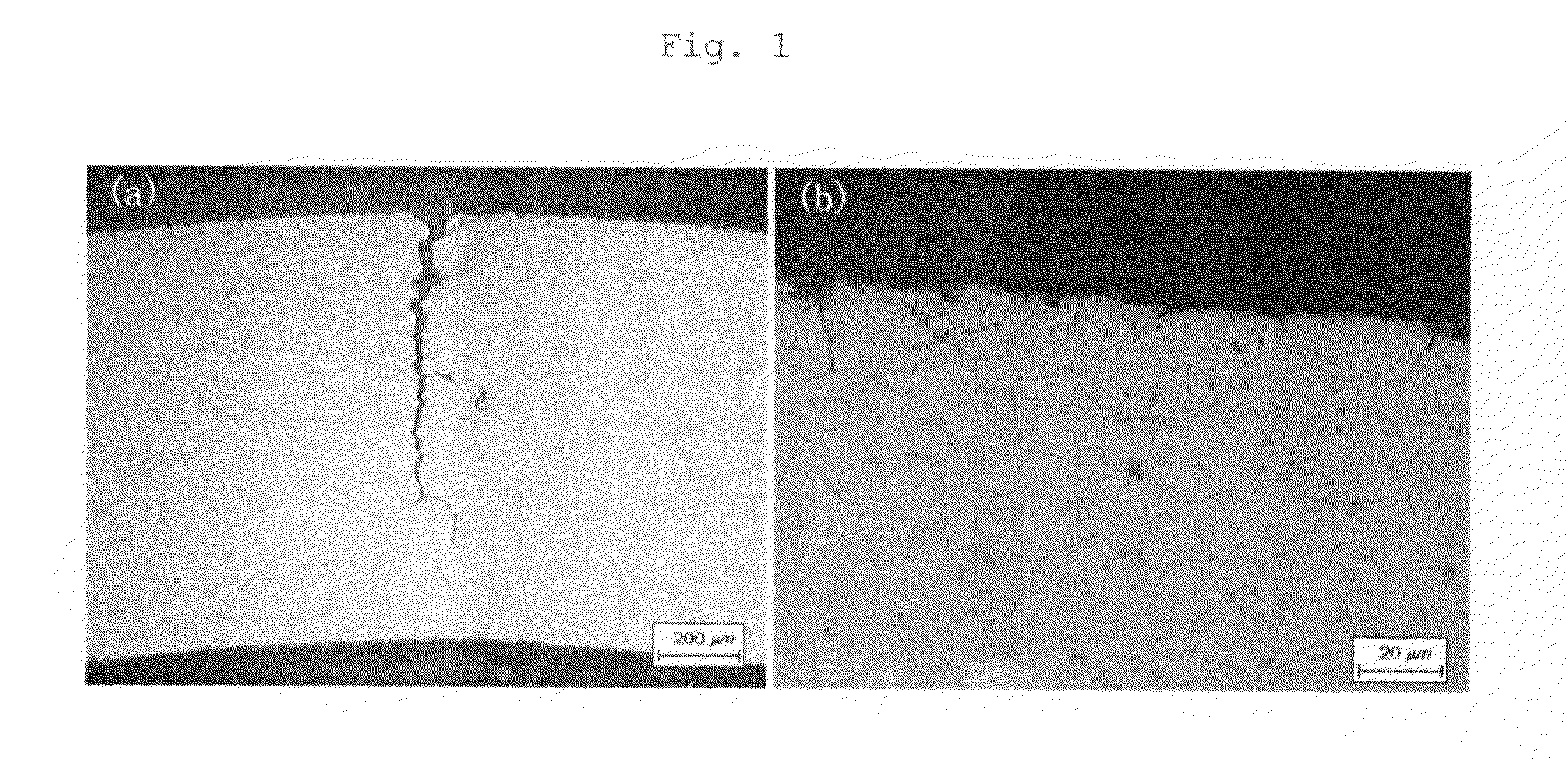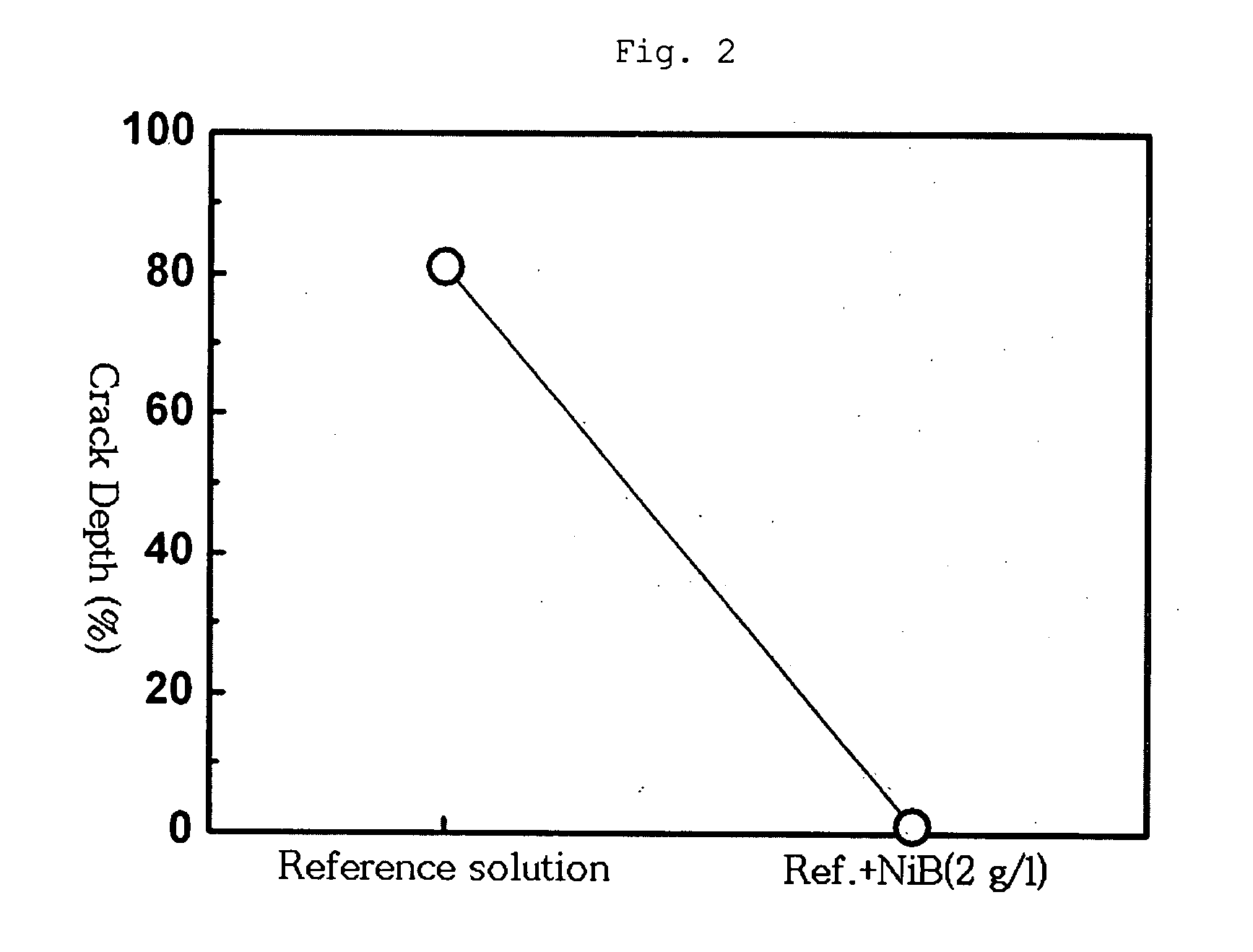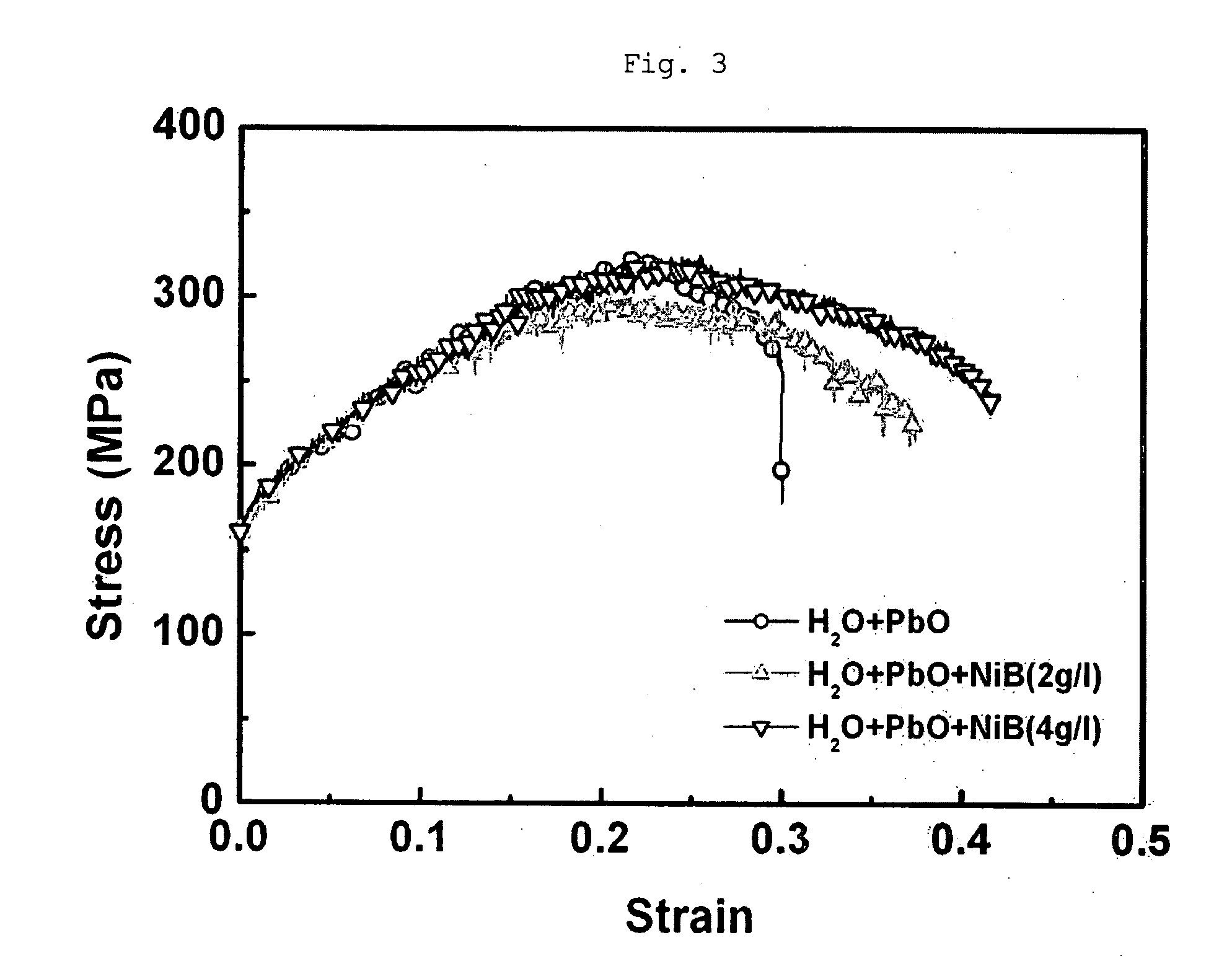Inhibitor of lead-induced stress corrosion cracking comprising nickel boride in secondary side of steam generator tubes in nuclear power plants and inhibition method using the same
a technology nuclear power plant, which is applied in the direction of nuclear engineering, solid state diffusion coating, nuclear elements, etc., can solve the problems cracking which is presumed to have been primarily induced by lead, and cracking into the secondary side of lead-induced stress corrosion cracking, so as to inhibit stress corrosion cracking, and reduce the incidence of stress corrosion cracking
- Summary
- Abstract
- Description
- Claims
- Application Information
AI Technical Summary
Benefits of technology
Problems solved by technology
Method used
Image
Examples
example 1
Effect of Nickel Boride on Lead-Induced Stress Corrosion Cracking of Steam Generator Tube
[0038]In order to evaluate the effect of nickel boride on lead-induced stress corrosion cracking of Inconel (Alloy) 600HTMA (NX8524) used for a steam generator tube in a nuclear power plant, C-ring specimens were manufactured from the tube, and a stress corrosion cracking test was performed under a strong caustic condition. The manufactured C-ring specimens were subjected to a stress corrosion cracking test using a slow strain rate tensile (SSRT) test technique. In addition, for testing lead-induced stress corrosion cracking in the caustic or neutral solution, a strong caustic solution of 40% sodium hydroxide or a neutral aqueous solution of ultrapure deionized water (18 MΩcm), containing 10,000 ppm lead oxide (PbO), was used.
example 1-1
Measurement of Lead-Induced Stress Corrosion Cracking in Basic Solution Using C-Ring
[0039]C-ring specimens were made of Inconel 600HTMA, used as steam generator tubes in nuclear power plants, and were then subjected to stress corrosion cracking tests.
[0040]The chemical composition of Alloy 600HTMA is shown in Table 1 below. The C-ring specimens made from Alloy 600HTMA tubes had a diameter of 19.05 mm and a thickness of 1.09 mm, and were used without particular heat treatment.
TABLE 1Chemical Composition of Alloy 600HTMA (wt %)CSiMnPCrNiFeCoTiCuAlBSNAlloy0.0250.050.220.0715.6775.218.240.0050.390.0110.150.00140.0010.0103600HTMA
[0041]The C-ring specimens were manufactured according to ASTM (American Society for Testing and Material) G38-01 standards, specifying the application of stress corresponding to 150% of room-temperature yield strength. Subsequently, the C-ring specimens were immersed in a caustic solution and then subjected to a stress corrosion cracking test using an autoclave....
example 1-2
Lead-Induced Stress Corrosion Cracking Test in Neutral Pure Deionized Water Solution Using SSRT Test Technique
[0044]The lead-induced stress corrosion cracking test was performed in a neutral solution using an SSRT test technique. The SSRT technique, which is a testing method of stress corrosion cracking while maintaining the tensile strain rate uniform, is based on a principle in which a stress corrosion cracking process depends on plastic strain of material, and is advantageous because a period of time required for the evaluation of resistance to stress corrosion cracking can be shortened, and also because the reproducibility of the test results is superior, compared to other test techniques. For test, the alloy 600HTMA was subjected to a stress corrosion cracking test under conditions of high temperature and high pressure using an Ni-autoclave having a capacity of 0.5 gallon. The tensile specimen underwent electric discharge machining so as to have a gauge width of 4 mm and a gaug...
PUM
| Property | Measurement | Unit |
|---|---|---|
| temperature | aaaaa | aaaaa |
| temperature | aaaaa | aaaaa |
| elongation | aaaaa | aaaaa |
Abstract
Description
Claims
Application Information
 Login to View More
Login to View More - R&D
- Intellectual Property
- Life Sciences
- Materials
- Tech Scout
- Unparalleled Data Quality
- Higher Quality Content
- 60% Fewer Hallucinations
Browse by: Latest US Patents, China's latest patents, Technical Efficacy Thesaurus, Application Domain, Technology Topic, Popular Technical Reports.
© 2025 PatSnap. All rights reserved.Legal|Privacy policy|Modern Slavery Act Transparency Statement|Sitemap|About US| Contact US: help@patsnap.com



